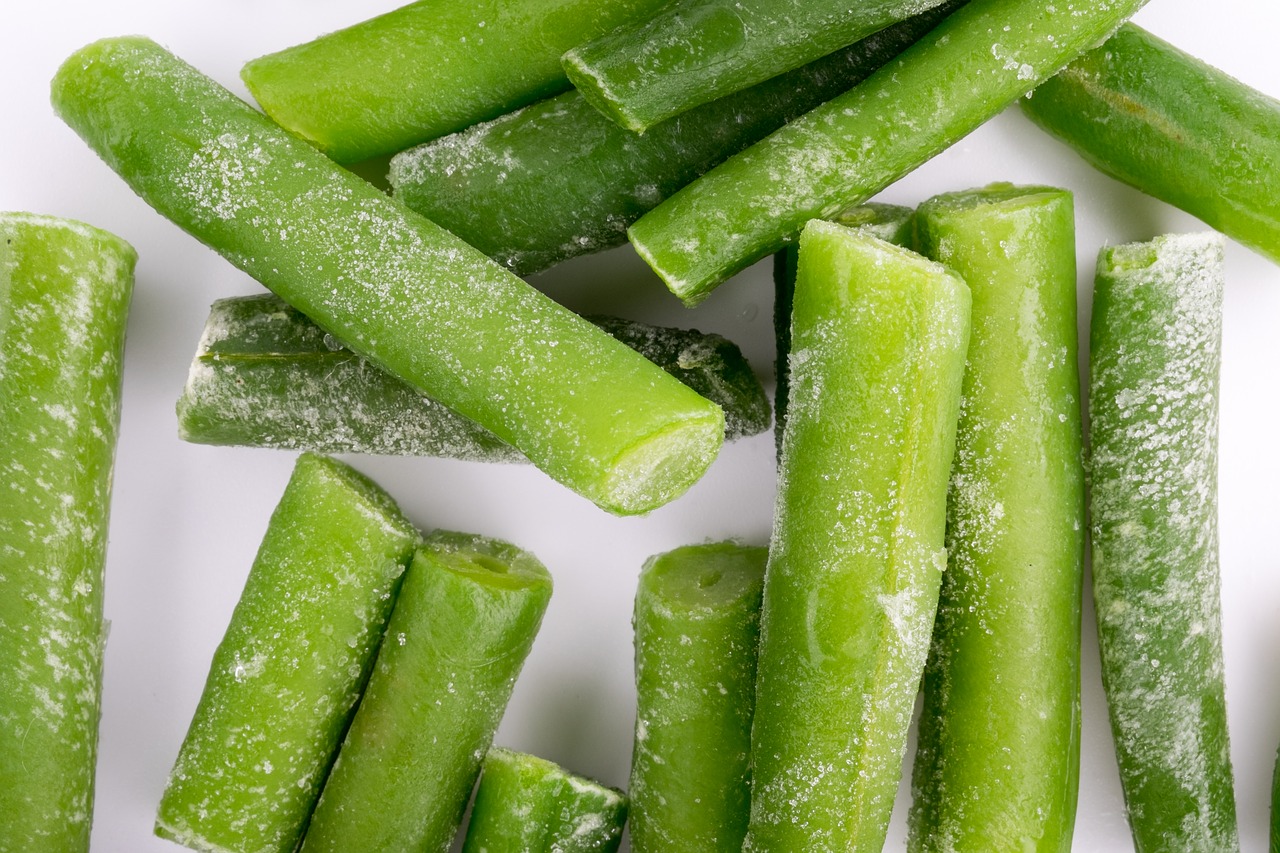
Blanching vegetables
Necessary pre-processing stem for some methods
Blanching
Why blanch vegetables?
Almost all vegetables require blanching before freezing or dehydrating, with a few exceptions. Blanching is a process where food is plunged first into hot boiling water and then cooled rapidly in ice water to stop the cooking process. Blanching kills enzymes, which cause fruits and vegetables to ripen and cause undesirable changes in food flavour, colour and texture. Make sure to follow exact blanching times for each type of vegetable. Under-blanching does not destroy all the enzymes while over-blanching overcooks and reduces flavour and nutrient content.
How to blanch vegetables
Equipment:
- Large pot with a cover (4 L water to about 500 g vegetables or 8 L for leafy greens)
- Wire basket or cheesecloth bag
- Large bowl
- Ice
- Colander
- Fill the large bowl with very cold water.
- Set aside.
- Fill pot with 3/4 full of water and bring to a boil.
- Place vegetables in wire basket or tie loosely in cheesecloth bag leaving length of string for ease of handling
- Lower vegetables into vigorously boiling water, cover and immediately start counting blanching time. Keep heat on high so water quickly returns to a boil.
- Once blanching time is up, chill vegetables immediately in cold running water. If water is not cold enough add ice.
- Leave vegetables in cooling water for the same time used in blanching but no longer than necessary.
- Drain cooled vegetables thoroughly and freeze or dehydrate according to the instructions on each page.
Blanching instructions
|
Vegetable |
Preparing |
Blanching |
|
Asparagus |
Remove tough ends. Cut in uniform lengths |
Med – 3 min Lrg – 4 min |
|
Beans (green/wax) |
Trim ends. Leave whole or cut in 3 cm pieces |
Cut – 3 min Whole – 4 min |
|
Beets |
Leave root ends on; cut off tops leaving 3 cm stems. Cook in boiling water until tender. Cool. Peel and slice |
None |
|
Broccoli |
Remove woody stems and trim. Cut through stalks so that pieces are not more than 3 cm across |
Med – 3 min Lrg – 4 min |
|
Brussel Sprouts |
Trim stems and outer leaves |
Sm – 3 min Med – 4 min Lrg – 5 min |
|
Cabbage |
Trim outer leaves and core. Cut in wedges or shred coarsely |
Wedges – 2 min Shredded – 1 min |
|
Carrots |
Remove tops and scrape or peel. Leave small carrots whole. Cut larger carrots in 1 cm slices or dice or cut lengthwise in fingers |
Cut – 3 min Whole – 5 min |
|
Cauliflower |
Break heads into small flowerets about 3 cm in diameter |
3 min |
|
Corn – whole kernel - on cob |
Remove husks and silk Remover husks, trim cobs to even lengths |
4 min Sm – 7 min Med – 9 min Lrg – 11 min |
|
Herbs |
Chop |
None |
|
Mushrooms |
Slice. Sauté 500 ml in 30 ml butter 4 min |
None |
|
Onions |
Remove outer skin, root and stem ends. Chop |
None |
|
Parsnips |
Remove stem and root ends. Peel. Cut in 2 cm fingers or 1 cm slices |
Fingers – 1 min Slices – 1 min |
|
Peas |
Shell |
2 min |
|
Peppers |
Leave whole or remove seeds and half stems, cut in half or chop |
None |
|
Pumpkin |
Cut or break apart, remove seeds and fibers. Cut in chunks. Steam, boil or bake until tender. Cool and scoop from rind. Mash or sieve |
None |
|
Spinach, Chard |
Wash thoroughly. Cut chard in 3 cm pieces or separate leafy parts from stalks and cut stalks in 10 cm lengths |
2 min |
|
Summer squash |
Cut in 1 cm slices |
2 min |
|
Winter squash |
Cut in pieces and steam, boil or bake until tender. Cool, scoop from rind and mash Peel and dice (butternut)
|
None 2 min |
|
Tomatoes |
Peel by dipping in boiling water for 30 – 60 seconds, cooling in cold water and gently slipping off skin. Cut in quarters. Add 5 ml salt, dash pepper and 5 ml sugar to 1 kg tomatoes and cook gently until tender (5-6 mins) |
None |
|
Turnip |
Peel, dice and boil until tender. Mash Peel, dice and blanch |
None 2 min |
Ref: Ontario Ministry of Agriculture and Food. (1990). Freezing Foods. Food Advisory Services. Canada Department of Agriculture.

